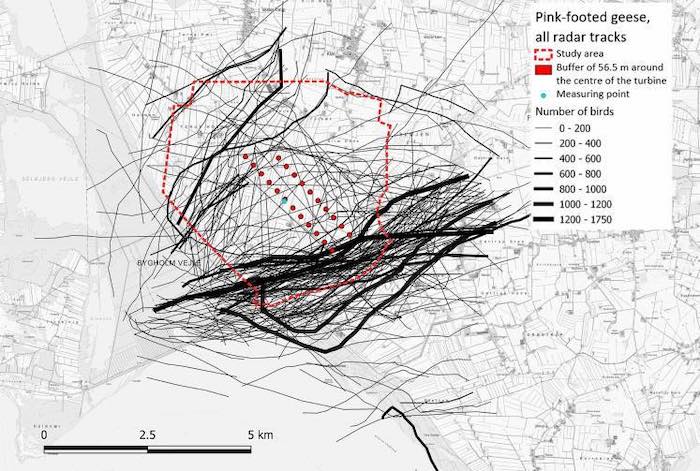The findings of a multi-year scientific study in Denmark have recently been announced, according to which birds effectively avoid wind turbine blades, thus reducing their mortality from collisions. This is an additional argument to the contrary claims that wind energy and renewable energy sources are a threat to the conservation status of wild birds.
The survey was conducted by three consulting firms on behalf of the Swedish energy company Vattenfall, and examined the Klim 67.2MW wind farm consisting of 22 wind turbines in northern Jutland, Denmark. The researchers focused on the first and third years after the construction of the wind farm. The data were collected every three days in three different periods of each year (autumn, winter, spring) lasting just over a month.
The survey was conducted in August 2016 until May 2017, during the first year of operation of the wind farm and in August 2018 until May 2019 during its third year of operation. In order to determine the annual degree of collision of geese and cranes with wind turbines, 11 selected wind turbines were tested during autumn, winter and spring.
The Klim wind farm is a remarkable example for study, as it borders the Vejlerne Natura 2000 International Bird Sanctuary, where thousands of birds leave their nests every day and fly in search of food in other areas. These are 20-30,000 geese (of the species Anser brachyrhynchus, commonly called pink-footed goose) and several hundred cranes. It is not surprising, given its location, that many of these birds fly through the area of wind turbines.
According to the research, the results of which will be published in the scientific publication “DOF BirdLife Denmark’s” together with an evaluation by peers in order to scientifically validate its results, during the first year of the research were found a total of 17 dead birds or bird remains below. of the 11 wind turbines under consideration, while in the third year the number was 22.
The dead birds or relics found were not all of the above type of goose. In addition, no dead cranes collided with wind turbines during the study.
According to the final analysis, the researchers found that within two years of research, the response response of geese and cranes proved to be 99.9% successful, compared to the population of 20,000-30,000 geese and several hundred cranes nesting there.

Figure 1. Imaging of an Anser brachyrhynchus goose using radar with width variations depending on the size of the herd. The marked red area indicates the wind turbines and the study area.
In addition, the investigation concluded that it can not be confirmed with absolute accuracy that the corpses of geese and cranes, emerged from the collision with wind turbines. However, the authors of the report in the study accepted that all the bodies of birds found under the wind turbines were the result of a collision with them.
“This is a protected area that is quite remarkable as 20,000-30,000 Anser brachyrhynchus geese nest here,” said Jesper Kyed Larsen, head of Vattenfall’s Department of Environment & Sustainability.
“During the winter season, thousands of birds fly through the wind farm in the morning and afternoon and this shows that birds can fly around or over wind turbines on such a large area. “A small percentage of them collide with wind turbines and their number is much smaller than previously thought.”
“These results confirm that birds are adept at flying around or over wind turbines. This is extremely positive, not only because it proves that almost no birds are killed in conflict with them, but also because it means that the construction of wind farms is not contrary to the natural environment. This new fact should be taken into account in the design of new wind farms “.
The research was conducted and compiled by three recognized consulting firms, including local ornithologists.










